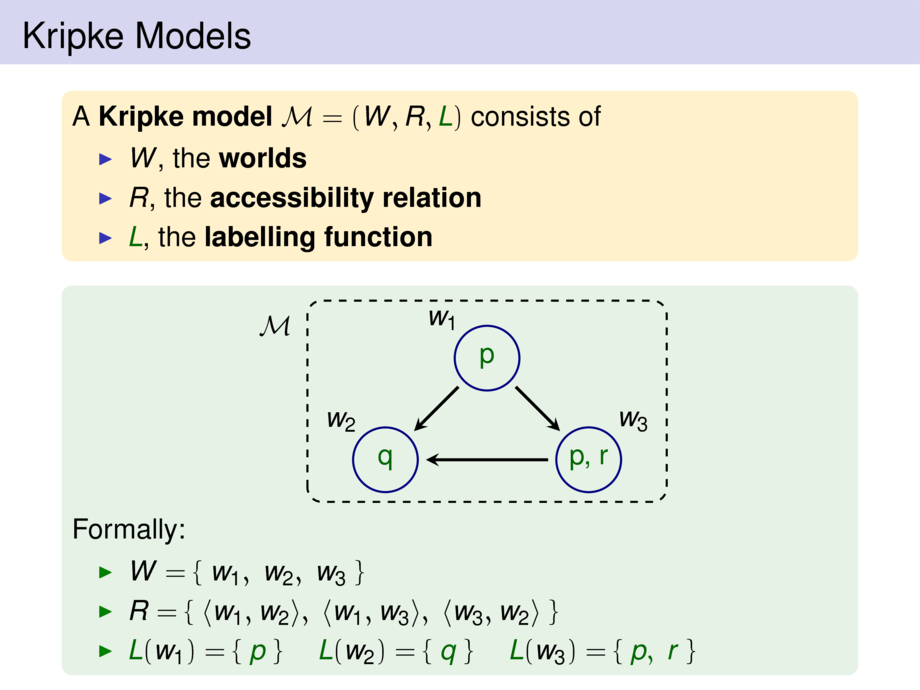



































































































10/158
\begin{frame}
\frametitle{Kripke Models}
\begin{goal}{}
A \emph{Kripke model} $\mathcal{M} = (W,R,\lab{L})$ consists of
\begin{itemize}
\item $W$, the \emph{worlds}
\item $R$, the \emph{accessibility relation}
\item $\lab{L}$, the \emph{labelling function}
\end{itemize}
\end{goal}
\begin{exampleblock}{}
\exampleA
Formally:
\begin{itemize}
\item $W= \{\;w_1,\;w_2,\;w_3\;\}$
\item $R = \{ \; \pair{w_1}{w_2} ,\; \pair{w_1}{w_3},\; \pair{w_3}{w_2}\; \}$
\item $\lab{L}(w_1) = \{\; \lab{p} \;\}$ \quad
$\lab{L}(w_2) = \{\; \lab{q} \;\}$ \quad
$\lab{L}(w_3) = \{\; \lab{p,\; r} \;\}$
\end{itemize}
\end{exampleblock}
\end{frame}

